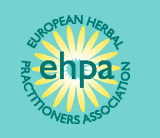 |
|
 |

For many centuries plant remedies were the main medicines used to treat disease throughout Europe and many famous herbals were published in English in the 16th and 17th centuries. Some, like those of Culpepper and Gerard, are still well known today. However, with the dawn of the scientific age came the slow decline of plant-based medicine accelerated by the widespread introduction in the eighteenth century of minerals and metal-based remedies into medicine such as arsenic, antimony, lead, mercury, copper, tin and gold. John Waller commented on this trend in his British Domestic Herbal published in 1822.
"Advantages have accrued to medicine from chemical preparations. It is nevertheless a melancholy truth that the health of thousands and the lives of not a few are yearly sacrificed to the rage for preparations of mercury, arsenic and almost every deleterious mineral under heaven. So far has this rage for poisonous drugs gained ground that scarcely any article from the plant kingdom is thought worthy to enter into the prescription of a modern physician that is not recognised for a dangerous and active poison; hence the daily use of aconite, hemlock, henbane etc."
With the discovery of antibiotics, corticosteroids and other major modern drugs, the vast majority of herbal remedies used by doctors for many centuries became relegated to mere footnotes in the official pharmacopoeias. They remained however the remedies of choice of UK herbalists and the practitioners of other herbal traditions that have recently taken root in Britain all of whom have continued these forms of traditional medicine into modern times.
Back